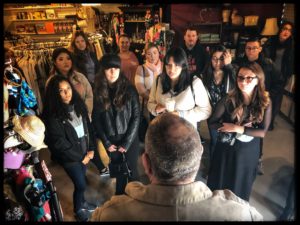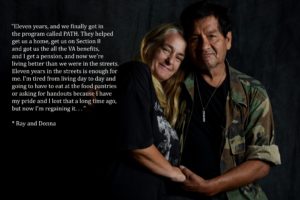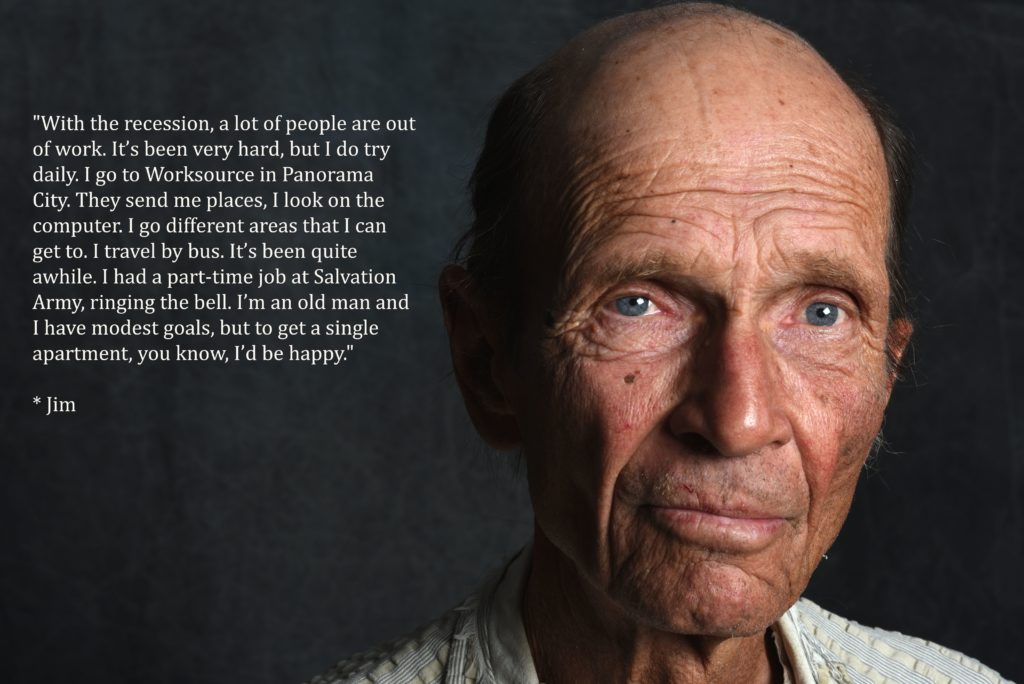Art as Advocacy: A Conversation with David Blumenkrantz
David Blumenkrantz has spent his career chronicling and advocating for homeless and marginalized populations in the U.S. and Africa. Now, as a professor at California State University, Northridge, Blumenkrantz is teaching students how to use art to support social change through a new class on advocacy journalism. Spotlight recently spoke with Blumenkrantz to discuss his work (including a recent show “One of Us” that provides homeless individuals a platform to tell their own story), teaching, and advice for other visual storytellers. This conversation has been lightly edited for length and clarity.
How did you begin focusing on storytelling around homeless populations?
I did a little photography of marginalized communities in college. After school, I ended up working in Africa for an NGO and then did solo work their afterwards. I spent a lot of time working with street kids in urban areas, and when I came back to the U.S. this continued to be an area of focus. I’ve been teaching since 2004 and have worked with students on these issues for a while, but it was only recently that it become a full-fledged class.
What’s your approach or process for doing this type of journalism?
I’m a big advocate of respectful representation. It’s not hard to pull at people’s heart strings with dramatic images, but I’ve tried to focus more and more on finding ways to let people speak for themselves.
I try to get my students thinking this way as well. My students do a lot of reading before going out in the field. I like to think of it as a kind of “sensitivity training.” I show them a lot of current literature and also provide my own perspectives. I don’t want them to feel as if they are serving as some sort of savior when they go out to do this work. I want to temper their expectations on what they can accomplish. It’s more about how they can engage with people.

A student project from Blumenkrantz’s class
Tell us a bit more about this advocacy journalism class in particular?
This is a senior capstone class for graduating journalism students, and the idea is that they go into a particular organization off campus, in a poor neighborhood, and use their skills in media to document the programs in the facility or to just help out and volunteer. Some students have produced broadcast quality media, and others are creating flyers and updating the organization’s website. Other students have gone in there and had an enriching experience just meeting with students after school, serving breakfast, or washing dishes. Whatever needs to be done. Hopefully this is something that can be beneficial for both the students and the organization. And people seem to have gotten a lot out of it.

Image from the “One of Us” project
I assume this is a somewhat new experience for many of your students?
Yes, when I went to Africa I found myself using my journalism skills for advocacy work and there are a number of journalists who do this type of work for a wide range of organizations. But even though there are career opportunities in this space, it’s something a lot of students won’t have been exposed to. I’ve always been of the mind as a teacher that I should try and give them that option for their career.
I worked for the LA Times, so I’ve had experience with straight journalism and advocacy. One of the things is you see more cause and effect working in advocacy journalism. I always felt that it was a gratifying dynamic to have that sort of feedback. You can see the results of your work in a more concrete way.
The concept of letting other speak for themselves also seems very apparent in your “One of Us” project.
Yes, the still image of the portrait allows people to live in that moment as long as they need to, but the video provides a more emotional experience what with the audio and the tone of voice.
This exhibition was built around conversations with more than 40 individuals and was done through a collaboration with the San Fernando Valley Rescue Mission. The idea was to give people an opportunity to tell their story if they were interested.

Image from the “One of Us” project
What are some of the things you hear from people?
You hear about people wanting to be treated with respect and as individuals. And affordable housing continues to be an enormous challenge. There is simply not enough, and the demand is overwhelming. You also see gentrification leading to people being squeezed out of family homes and neighborhoods. Outside investors don’t have the same sense of community or attachment to these people, and we ended up with a lot of people, including the elderly and the disabled, being squeezed out.
Do you have any advice or recommendations for those who want to use media to address these issues?
It always comes down to respect. If you want to do representation of marginalized communities, you need to avoid voyeurism and exploitation. It’s also often better to tie this media content creation to some specific focus on public awareness or fundraising rather than just art for its own sake. And as I’ve highlighted, I think to the extent possible, you need to let people speak for themselves and tell their own stories.
David Blumenkrantz is a professor at California State University, Northridge’s Mike Curb College of Arts, Media and Communication.
